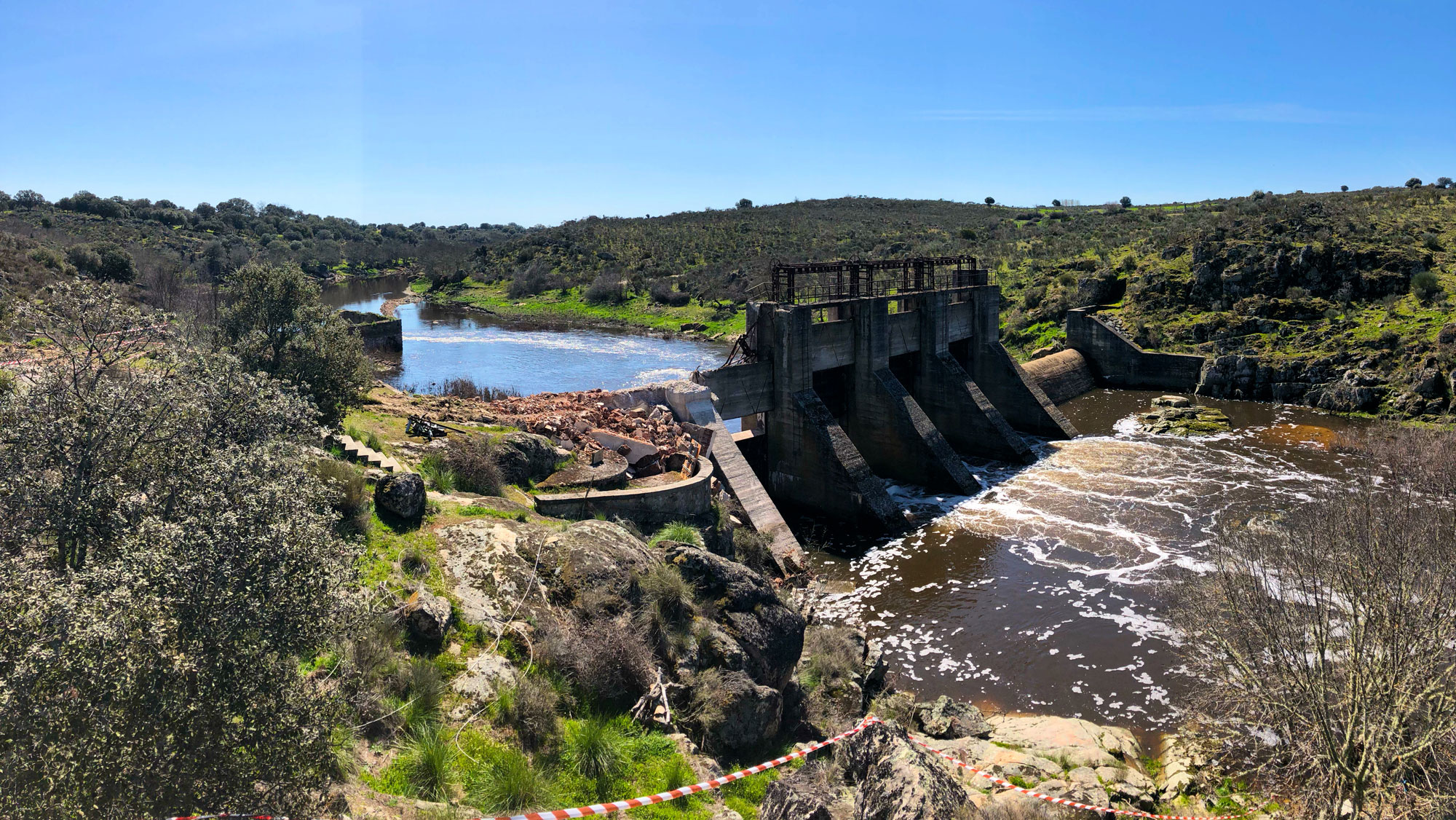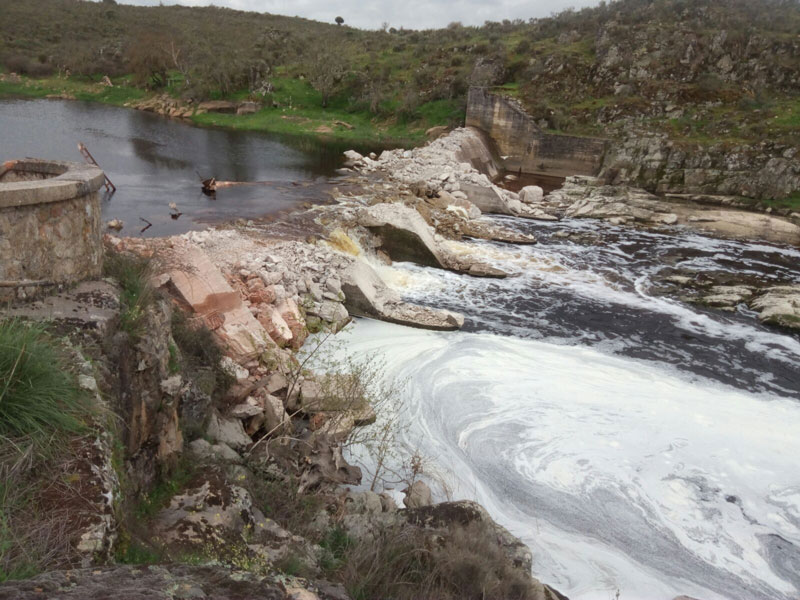Yeltes Before

©Herman Wanningen – WFMF

Yeltes Now– January 2019
©Rosa Olivo del Amo – WFMF
The Yecla de Yeltes Dam is located in the Huebra River in western Spain, Salamanca Province (Castilla y León Region), bordering Portugal. This barrier is within a Special Protected Area (SPA) for birds and a Site for Community Importance (SCI), which are both sites of Natura 2000 network.
This 22m high dam was built in 1958 to supply drinking water to the village of Vigudino. However, the dam is no longer working and has a strong negative impact on the graze lands, oak trees and limited population. The water rights have recently expired and the Duero River Basin Authority (Confederación Hidrográfica del Duero, CHD) decided to remove the dam.
CHD is responsible for the water management of the Spanish Duero Basin and for the maintenance of the infrastructures they own in their watershed. They facilitate the use of water by agriculture, drinking water production, recreation and nature. But also, when man-made barriers are no longer in use they consider removing them to avoid maintenance costs and to improve the ecological state of their rivers.
On April of 2018, CHD started the demolition of the Yecla de Yeltes Dam. By removing this dam, 27km of river were reconnected. Several species will benefit from this obsolete dam removal, like for example: otter, European pond turtle, trout and the endangered endemic species Sarda (Achondrostoma salmantinum).


The removal of this dam will have two effects, especially in the lower part of the Huebra River:
- it will eliminate an obstacle for all fish species, especially small cyprinids (endemic and endanger according to the Habitat Directive list of species) to move up and down a significant stretch of the river, and
- it will improve habitat conditions of the river resulting in a general improvement of the parameters that are used to assess the conservation status (ecological status as defined by the Water Framework Directive) because it will contribute to re-naturalize this river stretch.
To learn more about this action, you can go to the project website: LIFE + CIPRIBER project: https://cipriber.eu/En-inicio/

